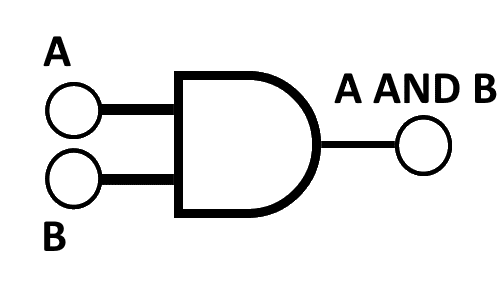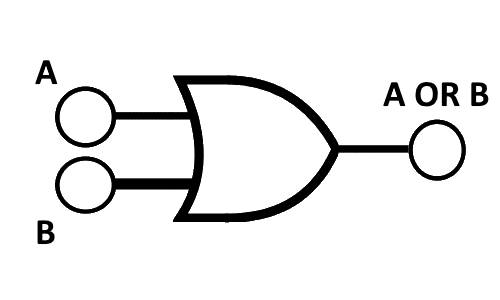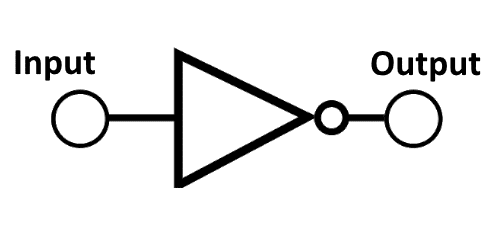Understanding the Essentials of Logic Gates
Derived from binary algebra, Logic Gates are simple electronic components that operate on one or more binary inputs and produce an output based on predefined logical functions like AND, OR, and NOT. They are the fundamental building blocks of digital circuits and impact all aspects of our modern digital lifestyle, stretching from the basics of computing to the operation of intricate electronic devices.
In the domain of digital computing, Logic Gates holds immense significance. They form the foundation of digital electronics, playing an instrumental role in the construction and operation of digital systems. From simple calculators to complex computer systems, Logic Gates are hard at work behind the scenes – driving computations, data storage, and a myriad of digital processes.
Despite their pervasive role, Logic Gates stands as a daunting challenge to many who embark on the journey of understanding digital computing. Memorizing and understanding the functionality of Logic Gates, with each gate serving a unique role, often pose difficulties for learners. For instance, an AND Gate outputs a binary 1 only if both its inputs are 1, whereas an OR Gate outputs a binary 1 if either one or both of its inputs are 1. This mix of functionality within different gates requires a deep understanding of boolean algebra and digital circuits, making the task complex and exhaustive.
This realization underscores the need for easy and intuitive tools for mastering Logic Gates, to develop a firm grasp of digital electronics and build a strong foundation for more advanced studies in the field of computing.
Understanding Logic Gates
At the very core of digital electronics and computing, logic gates function as the primary units to decode and process binary information. Harnessing Boolean algebra, Logic Gates utilize the principles of true and false associated with numerical counterparts 1 and 0.
Definition and explanation of the seven Logic Gates
AND Gate
The AND Gate delivers an output of 1 only when both its inputs are 1. As a fundamental tool in digital circuits, the AND Gate plays a crucial role in decision-making processes within software applications and physical electronic devices due to its strict requirements for a true outcome.

| Input A | Input B | Output (A AND B) |
|---|---|---|
0 | 0 | 0 |
0 | 1 | 0 |
1 | 0 | 0 |
1 | 1 | 1 |
OR Gate
In stark contrast with the AND Gate, the OR Gate produces an output of 1 if any or both of its inputs are 1. With a more liberal condition for a true result compared to the AND Gate, OR Gates stand functional in circumstances where alternative courses of action are available.

| Input A | Input B | Output (A OR B) |
|---|---|---|
0 | 0 | 0 |
0 | 1 | 1 |
1 | 0 | 1 |
1 | 1 | 1 |
NOT Gate
The NOT Gate is unique due to its single-input nature. Often referred to as an inverter, the NOT Gate gives an opposite binary output in reference to the input – if the input is 1, the output is 0, and vice versa. In digital circuits, they are pivotal in reversing states, handling negation, and acting as building blocks for more complex gates such as the NAND and NOR Gates.

| Input | Output |
|---|---|
0 | 1 |
1 | 0 |
Applications in Real Life
Living in a digital age, our daily interaction with electronic devices underlines how deeply embedded Logic Gates are in our everyday life.
Use in Digital Devices
Every time we use an electronic device, we are essentially harnessing the power of Logic Gates. Devices like computers, digital watches, calculators, and mobile phones rely heavily on the operation of Logic Gates, specifically Integrated Circuits (ICs), that facilitate complex functions by manipulating binary code in the background.
Role in Computer Programming
Logic Gates play a fundamental role in computer programming, serving as the basis of conditional statements. Programming languages leverage logical functions akin to those found in Logic Gates for decision-making, making them indispensable in the creation and application of software solutions.
Part of Circuits in Electronics
When it comes to electronic circuit designs, Logic Gates turns out to be essential elements. They create combinational or sequential logic, to handle operations in diverse electronic equipment, from simple flip-flop circuits to complex computer systems.
Diagrams and Symbols of Logic Gates
Communicating the functionality of Logic Gates calls for a universal language, which is expressed in the form of diagrams and symbols.
Explanation of Symbols
Each logic gate has a unique symbol that serves as its graphical representation. For instance, AND Gate is represented as a flat demi-oval, OR Gate by a curved figure, and NOT Gate, an emblem of inversion, by a triangle with a circle. NAND, NOR, and XOR Gates, on the other hand, have variations of these symbols to indicate their complex structures and dual functionalities.
Reading and Interpretation of Diagrams
Logic gate diagrams, most commonly referred to as circuit diagrams, are visual representations of how different gates operate together to supply a specific output. By interpreting these diagrams, individuals can design, build, or troubleshoot digital circuits effectively.
Techniques to Memorize Logic Gates
Understanding the intricacies of Logic Gates may feel challenging at first, but with effective learning strategies, it becomes a manageable and even enjoyable task. Let's explore several methods to aid the memorization of Logic Gates.
Technique 1: Mnemonics
Explanation of Mnemonics
Mnemonics are memory aids that can make learning more efficient and engaging. They help in structuring complex information, such as the principles of Boolean algebra or the operation of Logic Gates, into simplified, catchy phrases, or sentences that are easier to remember.
How to Create Mnemonics for Logic Gates
The key to developing effective mnemonics for Logic Gates lies in understanding their basic functionalities and finding memorable, relatable phrases for each. Start by studying the operation of each gate carefully, focusing on their input-output processes. Next, associate each gate with a phrase that complements its function.
Examples of Mnemonics for Each Gate
For instance, the AND Gate, which only produces a true output when both inputs are true, can be associated with the phrase "Both A AND B must work". Similarly, for the OR Gate, we can use "Either A OR B is enough", indicating its operation that either input could be enough to produce a true output.
Technique 2: Visualization and Association
Explanation of Visualization
Visualization is a powerful tool for memory retention and comprehension. By building a mental image of an abstract concept, you can achieve a deeper understanding and longer-term memory. Visualization works perfectly with Logic Gates, especially when combined with their circuit diagrams and symbols.
How to Associate Logic Gates with Everyday Objects
One effective way to visualize Logic Gates is by associating them with everyday objects that imitate their function. These objects serve as cues that prompt the functions of Logic Gates. For example, doors with different conditions to open can represent AND and OR Gates, whereas a switch that reverses the state of a light bulb could signify a NOT Gate.
Examples of Associations for Each Gate
An AND Gate can be linked to a dual-key lock – it will open only when both keys are inserted. An OR Gate, on the other hand, could be thought of as a door with two knobs – turning either knob or both would open the door. Finally, a light switch best serves the function of a NOT Gate, flipping the state of light from 'on' to 'off' and vice versa.
Technique 3: Practice and Repetition
The Role of Repetition in Memory Retention
Repetition is pivotal in solidifying memory and easing recall of the learned material. It allows the brain to strengthen the neural pathways associated with the information, making recalling faster and more efficient. In digital electronics, the constant practice of Logic Gates cements their functions in memory.
How to Incorporate Logic Gates into Regular Study Routine
The practice of Logic Gates can be incorporated into the study routine through exercises like creating and solving Boolean algebra problems, designing circuit diagrams, and programming tasks that require logic. The frequent encounter with Logic Gates in different contexts accelerates understanding and memory retention, thus making their application in digital circuits more intuitive over time.
Verification of Understanding
Merely acquiring knowledge about Logic Gates at a theoretical level isn't enough. One must scrutinize their understanding, apply their knowledge in real-life scenarios, and continuously learn to attain full mastery over Logic Gates and their operations within digital circuits.
Importance of Evaluation
Role of Self-Testing in Memorization
Self-testing is an effective tool for tracking your learning progress. It allows learners to actively identify gaps in their understanding and strive for improvement. The practice of self-evaluation in conjunction with studying Logic Gates helps engrave them in memory and enhances their swift recalling during tasks requiring immediate application like digital circuit design or binary code manipulation.
Tools for Self-Testing
Several tools can facilitate self-testing. Flashcards with a Logic Gate symbol on one side and its name and function on the other can be helpful in prompt recognition and recollection. Moreover, online resources, mock tests, and app-based quizzes present a host of readily accessible and versatile test mediums.
How to Interpret Test Results
Interpreting the results of self-tests is crucial for adaptive learning. Instead of focusing solely on right or wrong answers, learners should focus on gaps in knowledge they reveal, understand the root of any misconceptions, and look for themes in recurring errors. Such reflective practice can guide the learner towards focused revision and efficient study practices.
Application of Logic Gates Knowledge
Real-Life Scenarios Where Logic Gates Are Applicable
The practical application of logical gates in everyday electronic devices, from remote controls to traffic signal operations, emphasizes their ubiquity and importance. With a solid foundation in Logic Gates, one can grasp how digital devices operate, diagnose issues, and even delve into designing basic digital circuits.
Importance of Application in Memory Retention
Studies suggest that meaningful learning occurs when one applies their knowledge to real-life scenarios. It aids memory retention and the transferability of knowledge. As Logic Gates are interfaced in almost all electronic devices, applying their knowledge in real life helps to deepen understanding and enhance retention.
Ways to Practically Apply Logic Gates Knowledge
From programming solutions using logical functions akin to Logic Gates to cultivating a hobby in electronics where one can design and build devices using integrated circuits, the sphere to apply Logic Gate knowledge is vast. Additionally, troubleshooting basic electronic devices can also serve as an effective application of logical gate understanding.
Continual Learning and Improvement
Role of Continual Learning in Mastery
Mastering Logic Gates requires a commitment to lifelong learning. With constant advancements in digital electronics, gate functionalities are expanding, and new types of gates are being discovered. Continual learning is vital for keeping abreast of these advancements and augmenting one's competency.
Sources for Advanced Logic Gates Learning
Several online platforms offer advanced courses on digital circuits and Logic Gates. From OpenCourseWare offered by universities like MIT to MOOC providers like Coursera and EdX, a wealth of resources is available online. Additionally, reading books, and joining clubs, or forums dedicated to electronics can also prove beneficial in advanced learning.
Revisiting the Realm of Logic Gates
To recap, Logic Gates are the elementary yet powerful components that fuel the digital world. They lie at the heart of digital electronics and make the magic of binary calculations possible in digital circuits, impacting devices from essential household electronics to sophisticated computation systems. While the task of memorizing Logic Gates may seem daunting initially, with a good grip over their fundamental operation and the right learning strategies, one can master their functionality effectively.
The journey to understanding and memorizing Logic Gates leverages a variety of techniques. Mnemonics brings a creative way to connect intricate operations of Logic Gates to easy-to-remember phrases, while visualization associates abstract functions of Logic Gates with tangible everyday objects to aid recollection. Moreover, the old-age proven technique of repetition magnifies memory retention and sharpens recall.
Building on this, self-testing emerges as an indispensable tool to gauge your learning progress and recognize areas of improvement. Importantly, nothing reinforces learning more efficiently than real-life application – habituating to recognize the functionality of Logic Gates in everyday devices and practicing to design basic digital circuits solidifies the knowledge of Logic Gates.
Takeaways, Assurance, and Forward Path
It's crucial not to be deterred by initial difficulties or misconceptions when it comes to mastering Logic Gates. Remember, the key isn't only to know the essential functions of AND, OR, and NOT gates but to understand how different gates working together can create intricate, multifunctional digital circuits that can perform complex calculations and tasks.
The journey towards mastering Logic Gates is a rewarding one, opening doors to exciting fields such as digital electronics, computer science, and electrical engineering. With perseverance, active engagement, and continual learning, overcoming the challenges set by Logic Gates can turn into one of the most gratifying academic achievements.
Finally, it's worth emphasizing that learning doesn't stop. The landscape of digital electronics is continually evolving, and new developments will require an updated understanding of Logic Gates and their operations. Pursuing advanced courses and continual self-practices apart from traditional curricula will help make you not only competent in handling current digital systems but also equip you for innovative shifts in the future.
